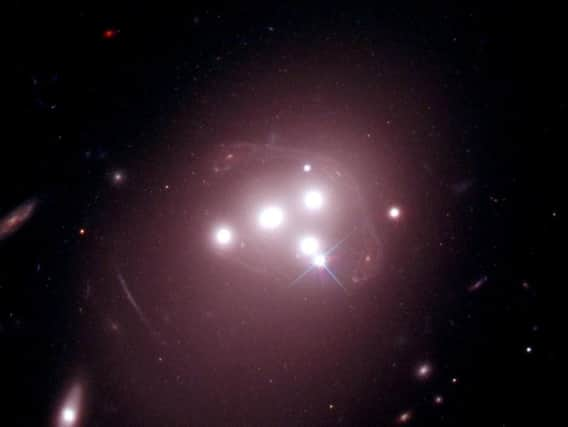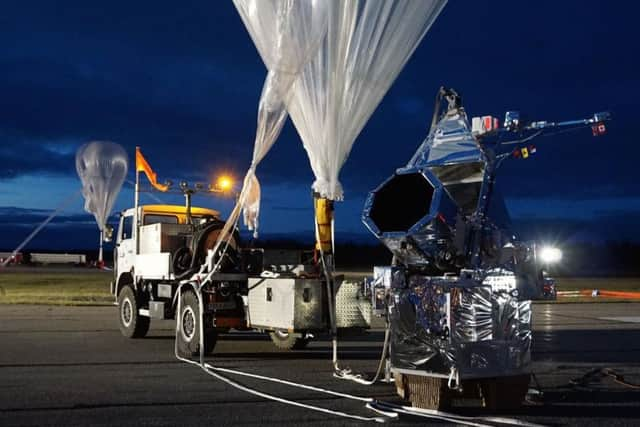Astronomers back in the dark over dark matter after new findings by Durham University team


Researchers thought they were one step closer to identifying the mysterious substance when they noticed a galaxy in a cluster had become separated from the dark matter surrounding it three years ago.
The discovery, by astronomers led by Durham University, suggested the substance was interacting with other dark matter through forces other than gravity.
Advertisement
Hide AdAdvertisement
Hide Ad

However data from more recent observations has revealed the location of otherwise invisible dark matter, showing it did not separate from its galaxy after all.
Around 27% of the universe is dark matter, which cannot be seen, while normal matter such as planets and stars makes up about 5%.
Relatively little is known about the substance but scientists say galaxies like the Milky Way exist inside clumps of dark matter and would be unable to stay intact without the effect of its extra gravity.
Lead author Dr Richard Massey, from Durham University's Centre for Extragalactic Astronomy, said: "The search for dark matter is frustrating, but that's science.
Advertisement
Hide AdAdvertisement
Hide Ad
